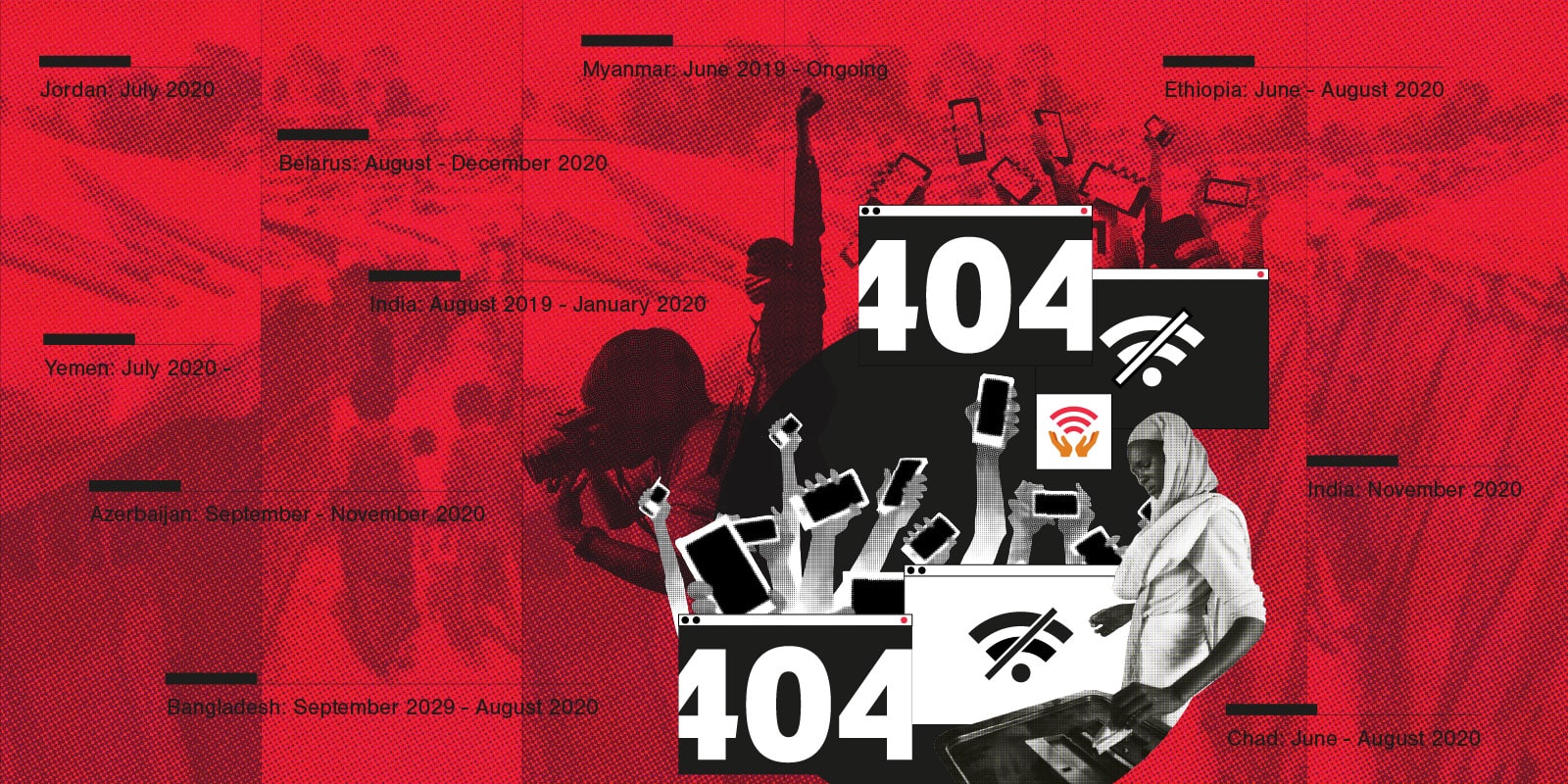Read in: español | française | العربية
In 2020, Access Now and the #KeepItOn coalition documented at least 155 internet shutdowns in 29 countries. Read the full report here, and keep up with the latest internet shutdown news here.
Hundreds of millions were cut off in the COVID-19 pandemic, losing access to life-saving health information, education, and work opportunities.
India remained the country with the highest number of shutdowns. Beginning in 2019 and continuing into 2021, Myanmar imposed one of the world’s longest recorded shutdowns in Rakhine and Chin states.
An increasing number of shutdowns occurred this year in response to ongoing violence, particularly in active conflict zones.
Authoritarian regimes often shut the internet down to silence protests, sway elections, hide human rights violations, and bargain with other bad actors, with the aid of companies that provide censorship technologies.
To help us fight internet shutdowns globally, join the #KeepItOn coalition.
When 2021 began with Uganda ordering internet shutdowns during a presidential election, Myanmar’s military using shutdowns in a coup attempt, and India leveraging blackouts to crush the nationwide Farmer’s Protests, the world was outraged, but we were not surprised. The stage had been set by authoritarian regimes that deliberately cut millions of people off from the internet in 2020, ignoring a global pandemic to serve their own ends and, in many cases, gain power. Our latest #KeepItOn report, Shattered dreams and lost opportunities: a year in the fight to #KeepItOn, compiles the data on 2020 shutdowns and documents the devastating impacts on people and communities. It reveals what happens when governments do not loosen their iron grip on the dreaded kill switch.
The people most hurt by shutdowns in 2020 were those already facing repression, silencing, and marginalization. They include Rohingya Muslims in Myanmar and Bangladesh, Belarusians fighting for their democracy, and Ethiopians, Yemenis, and Kashmiris caught in the crossfire of communal violence and active armed conflict. Internet blackouts not only threaten people’s lives during COVID-19 and block protests and organizing, they also dismantle pathways for getting help. Many who were targeted by shutdowns in 2020 remain in danger today.
Following are highlights of data from the report, including case examples. The full report contextualizes internet shutdown data with additional research and analysis of important trends, such as crackdowns on tools for circumventing shutdowns and censorship. Read the complete report here.
If you can’t see the highlights below, please check your privacy-enhancing browser extensions. Open in desktop view for best experience.
What happens next? To find out, join the #KeepItOn campaign to stop shutdowns around the world
This report is built on the internet shutdown data collected by the #KeepItOn coalition, a group of 243 organizations from 105 countries that works to end internet shutdowns around the world. It’s part of Access Now’s ongoing effort to help the community track network disruptions and censorship, identify trends over time, and collectively strengthen our global fight against shutdowns.
There are many different kinds of internet shutdowns, and just as many ways to fight them. Our coalition needs your support. We encourage everyone who wants to stop shutdowns — activists, civil society actors, and everyday citizens — to join us in calling out governments, telecommunication companies, and other actors who play a role in blatant censorship and repression. You can learn more about the #KeepItOn coalition and how to push back against shutdowns through the #KeepItOn FAQ.
